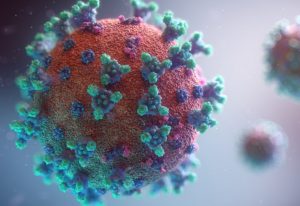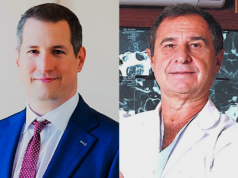 A webinar hosted by the Society of NeuroInterventional Surgery (SNIS) on 2 April brought together neurointerventionalists and endovascular neurosurgeons from Italy, China, and the USA. Important questions such as who to treat, whether to intubate, and how to optimise post-care pathways in the setting of COVID-19 were raised, as each physician disclosed what they would have done two weeks prior, had they known of the pandemic’s devastating effects.
A webinar hosted by the Society of NeuroInterventional Surgery (SNIS) on 2 April brought together neurointerventionalists and endovascular neurosurgeons from Italy, China, and the USA. Important questions such as who to treat, whether to intubate, and how to optimise post-care pathways in the setting of COVID-19 were raised, as each physician disclosed what they would have done two weeks prior, had they known of the pandemic’s devastating effects.
“COVID is devastating, but so is large vessel stroke,” declared J Mocco, endovascular neurosurgeon from Mount-Sinai Health System, New York, USA. “Stroke patients need an advocate.” Arguing that many procedures carried out in hospitals are elective or semi-elective, he added, “There is a lot of improving quality of life work, and procedures that can wait. Stroke is not one of them. We are in the minority taking care of this highly time-sensitive patient population. We need to advocate for them.”
Though in agreement, Michael Levitt, University of Washington (Seattle, USA) asserted, “For places that do not have the right personal protective equipment [PPE], now is not the time to go off the reservation and do things that are outside the scope of typical practice.”
Alluding specifically to COVID-endemic areas, Levitt said there is a continuum in terms of who to treat. “The way I look at it is: What is the risk of COVID infection in the population? Is the risk of leaving something alone for two weeks greater than the risk of COVID infection for the population? If the answer is yes, then it is reasonable to do that case … But benign tumours, unruptured aneurysms or unruptured AVM—there is no reason to be doing those cases. You are actually subtracting from your healthcare system’s ability to handle things.”
Tao Hong of Xuanwu Hospital, Beijing, China, confirmed that in Beijing, non-emergency interventional procedures have been suspended. For cases like subarachnoid haemorrhage, which, according to Hong, now commonly present with fever, the team at Xuanwu Hospital awaits the results of the patient’s COVID-19 test before performing digital subtraction angiography (DSA) and embolising.
Discussing how neurointerventional practice has changed in Beijing, Hong said that a chest CT scan has been added to the diagnostic workup of acute stroke patients, while the number of medical professionals in surgery itself is reduced. He added, “There is a lot of telemedicine now in China, after COVID-19, with a lot of consultants encouraged to provide services online, including our department.”
Hong told the audience of a lesson learnt in China. “We had a neurosurgeon get infected, and the whole department was shut down. … To protect ourselves is to protect our ability to treat further patients.”
Reiterating the importance of self-protection, Leonardo Renieri, Careggi University Hospital, Florence, Italy, emphasised that not only has their practice changed in Italy, but their approach to patients. “We used to think about the best approach for the patient, but now, we have to think first about how to protect ourselves, the personnel working with us, and the non-COVID patients admitted to the hospital. It means we have to wait for the swab [COVID-19 test] whenever possible.”
Renieri added that his hospital prefers performing stroke procedures under general anaesthetic, as it is safer, he said, due to the patient being connected to a ventilator.
Noting a difference in patient triage between Renieri’s practice in Florence and his own in Seattle, Levitt said they assume all patients are COVID-positive, until proven otherwise. Moreover, on what he refers to as a highly debated topic: to intubate or not to intubate, Levitt speculates: “It is not that straightforward”, and emphasised that an intubated patient is not necessarily safer. Though acknowledging that if a patient is intubated somewhere else and bought in, they are on a closed circuit, meaning they are safer, he argued that anytime the circuit is disrupted—through suctioning, cuff leaks, manipulation or switching from a transport vent to a regular vent—an aerosolising event could occur.
“It is a false sense of security saying that intubated patients are safer,” Levitt continued. He urged his colleagues listening in to try and avoid intubating in the angiosuite prior to thrombectomy, while unplanned intraprocedural intubation should be avoided “at all costs”.
Expanding on these lessons learnt, Mocco proposed that areas expecting to become COVID-endemic should prepare for intensive care unit (ICU) expertise. He encouraged physicians to “start thinking beyond just the neurointerventional suite, and the fact that you may be called on to provide ICU care.” He added that he had sent his own department at Mount-Sinai Health System an email requesting all faculty to participate in a 90-minute course, as well as around eight hours of online training each for critical care and ICU support.
In addition, Mocco called for hospitals to prepare for employee shortage. “It is not just the doctors, but the hospital transporters, the clerks, the ward staff, and the nurses, who are all unbelievable in their dedication.” He added that it is also important to think about improving pathways for non-ICU recovery, yet acknowledged that “every institute has its own nuances”.
A question and answer session followed the speakers’ presentations, whereby a question was raised regarding what to do with the supplies that were used for a COVID-positive patient. Levitt replied: “You need to disinfect the outside of just about everything, with some kind of industrial cleaning wipe. If you have cabinets of equipment in your angiosuite that are closed, then you do not need to open them and wipe down every individual box, but you do need to wipe down the outside of the cabinet. If you are opening and closing the doors for your stroke equipment, that is when that kit goes outside [during the procedure].
“The jury is out on how long aerosolised particles may stay in a non-negative pressure environment,” Levitt added. “We think it is somewhere between 15–20 minutes, but it is important for cleaning staff going into an environment that has been recently aerosolised to wear full PPE,” he highlighted.
Lastly, Levitt explained that regarding PPE and safety measures, there is a point to be made about timing. “All the time metrics are no longer important to me, the safety of the staff is the thing I think about.
“There are no true emergencies in a pandemic like this, there is no cutting corners. Everything will take longer, and we have to be okay with that. Because if you go down, nobody will be getting stroke care, so we have to think about the long term.”












